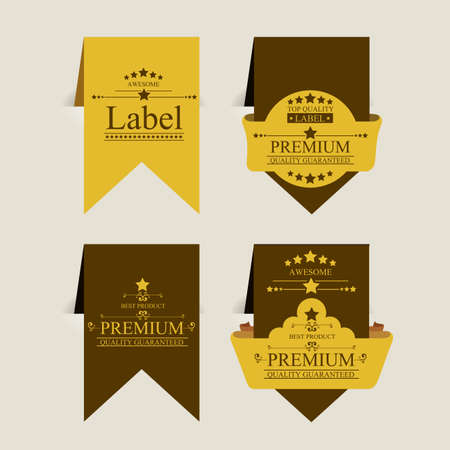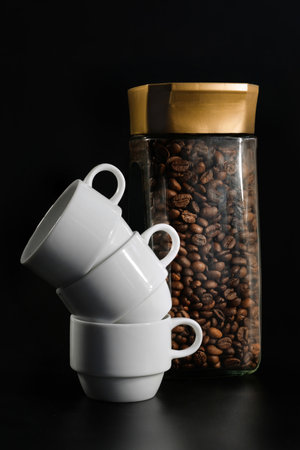Brewing Traditions: A Brief History of Coffee in India
If you wander through the lush, dew-kissed hills of Chikmagalur, you might catch the scent of roasted beans drifting in the morning air—a fragrance that has become deeply intertwined with Indian culture. The story of coffee in India is not just about a beverage; it’s a tale steeped in history, tradition, and daily rituals. Legend has it that Baba Budan, a 17th-century Sufi saint, smuggled seven raw coffee beans from Yemen into India, sowing the seeds of what would become a thriving industry. From these sacred beginnings, coffee plantations flourished across Karnataka, Kerala, and Tamil Nadu, their emerald canopies eventually feeding the country’s growing thirst for caffeine. In cities like Bengaluru and Mumbai, the humble filter kaapi—served piping hot in steel tumblers—became more than a drink; it became an emblem of hospitality and togetherness. Today, as international coffee chains dot urban skylines and desi brands continue to hold sway in local hearts, the journey from Chikmagalur’s misty estates to the bustling city cafés reflects how coffee has woven itself into the very fabric of Indian life. Whether it’s catching up with friends at a roadside darshini or sealing business deals over cappuccinos in swanky lounges, each cup tells a story of changing tastes and timeless traditions—a perfect stage for exploring how Indian consumers navigate between beloved desi blends and global giants.
2. Desi Coffee Brands: The Heartbeat of Local Flavour
When it comes to coffee, Indian consumers have always held a special place in their hearts for homegrown brands that resonate with the local palate and sensibilities. There’s something about sipping on a perfectly brewed cup of Bru or Tata Coffee that feels like a warm embrace from home—familiar, comforting, and unmistakably “desi.”
Among the pioneers, Café Coffee Day (CCD) stands tall as the quintessential Indian café chain. With its inviting ambience and pocket-friendly menu, CCD has become a second home for college students, young professionals, and families alike. Its presence in both metros and small towns makes it a true democratizer of café culture in India.
Popular Desi Coffee Brands & Their Unique Offerings
| Brand | Signature Product | Desi Touch |
|---|---|---|
| Café Coffee Day | Cappuccino, Filter Kaapi | Youth-centric cafés with Indian snacks |
| Bru | Instant Coffee & Bru Gold | Deep, robust flavours familiar to every Indian kitchen |
| Tata Coffee | Grand Filter Coffee, Tata Coffee 1868 | Sourced from South Indian estates; filter coffee blends |
The Magic of Indian Brewing Styles
No conversation about desi coffee is complete without mentioning traditional brewing methods. Filter coffee, especially beloved in South India, is brewed using a metal filter and mixed with hot milk and sugar—served piping hot in a steel tumbler and dabarah. This ritualistic preparation is more than just caffeine; it’s nostalgia in a cup.
The Rise of Chic ‘Desi’ Cafés
Today, there’s an exciting surge of stylishly local cafés across cities—from Bengaluru’s artisanal filter coffee bars to Mumbai’s hip cafes offering monsoon Malabar pour-overs. These spots blend contemporary aesthetics with authentic Indian flavours, reflecting the evolving tastes of urban consumers who want their coffee modern but rooted.
For many Indians, choosing desi brands means more than taste—it’s about supporting local enterprise, celebrating cultural identity, and relishing traditions that have stood the test of time.

3. International Invaders: Starbucks, Costa & the Global Experience
When international coffee giants like Starbucks and Costa Coffee set foot on Indian soil, it was more than just a commercial move—it was the beginning of a new chapter in India’s café culture. For decades, the Indian palate was shaped by robust filter kaapi and the milky sweetness of roadside chai. Suddenly, city corners buzzed with global brands promising not just a cup of coffee, but an experience straight out of New York or London.
These international chains knew better than to ignore local sensibilities. Starbucks didn’t just offer its signature Caramel Macchiato; they introduced Masala Chai Tea Latte and paneer tikka sandwiches, infusing their menu with Indian flavours to make every visit feel a little more like home. Costa Coffee played a similar tune—think spicy samosas alongside your cappuccino. These adaptations were not merely token gestures; they reflected an understanding that the Indian consumer is open to global trends but values the comfort of familiar tastes.
But the allure went beyond food and drink. The plush sofas, free Wi-Fi, and Instagrammable décor turned these cafés into urban sanctuaries for millennials and Gen Z alike. In metros like Mumbai and Bengaluru, hanging out at Starbucks became shorthand for modernity—an aspirational lifestyle where you could sip a frappuccino while working on your start-up pitch or catching up with friends.
Of course, this international wave brought its own influence on local habits. The idea of ‘coffee dates’ and working out of cafés gained popularity, nudging even desi brands to up their ambiance game. Suddenly, coffee was not just about taste—it was about vibe, identity, and belonging to a global tribe.
Yet, for all their success, these global brands tread a fine line. They must balance their international charm with deep respect for Indian traditions—a delicate dance between introducing new experiences and honouring old favourites. As India’s coffee story evolves, these ‘invaders’ are fast becoming part of the local landscape, shaping how young India sips, socialises, and savours every cup.
4. Taste Preference in the Indian Janta
Step into any bustling café from Mumbai’s Colaba to Bangalore’s Indiranagar, and you’ll catch the unmistakable aroma of freshly brewed coffee mingling with animated conversations. But what exactly are Indian consumers—the janta—seeking in their daily cup? Is it the familiar comfort of desi filter kaapi, the punchy strength of an espresso shot, or something altogether more nuanced?
For many, aroma is king. The fragrance of roasted beans, especially with chicory notes in South Indian blends, evokes nostalgia and home. Others chase strength, preferring robust decoctions that can kickstart a busy day. Then there’s a growing tribe for whom the café vibe matters as much as the coffee itself: think Instagrammable interiors, indie music, and that elusive “third place” between work and home.
What Does the Indian Janta Really Crave?
| Coffee Attribute | Desi Brands (e.g., Bru, Nescafé India) | International Brands (e.g., Starbucks, Costa) |
|---|---|---|
| Aroma | Rich, familiar; often with chicory | Freshly ground; single-origin options |
| Strength | Robust decoctions; strong instant blends | Customisable shots; generally smoother profiles |
| Value for Money | Pocket-friendly sachets & jars; refill culture at local cafés | Premium pricing; experience-driven value |
| Café Vibe | No-frills, community-centric South Indian cafés (“darshinis”) | Sleek interiors, global ambiance; Wi-Fi and workspace focus |
The Everyday Reality: Mixing Traditions with Trends
The reality is deliciously hybrid. Many Indians will start their mornings with a cup of strong homemade filter coffee—served piping hot in stainless steel tumblers—before catching up with friends over a Caramel Macchiato at a glitzy international chain. It’s less about choosing sides and more about matching mood and moment.
The Value Equation: Paisa Vasool or Premium Indulgence?
At heart, Indian consumers are discerning—not just about taste but also about “paisa vasool” (value for money). Desi brands win on affordability and emotional connect, while international players score high on novelty and aspirational appeal. In this lively tug-of-war between tradition and trendiness, every sip tells a story—and every story starts with personal preference.
5. The Price Factor: Sip by Sip Comparison
Step into any Indian kirana store or a shiny supermarket aisle and you’ll spot both local favourites like Bru and Nescafé perched right next to global giants like Starbucks and Lavazza. But when it comes down to what actually lands in the average Indian’s cup each morning, price plays the starring role. For most coffee lovers in India, cost is not just a number—it’s an everyday reality that shapes their routine indulgence. Desi brands have long understood this; they offer pocket-friendly sachets and refill packs starting as low as ₹10, making them easily accessible for college students in Bengaluru hostels or families in Lucknow alike. International brands, meanwhile, often carry a premium aura—think glossy packaging and big-city café vibes—but their higher price tags mean they’re more of a treat than a daily staple for many.
Accessibility: Chaiwala vs Café Culture
It’s not just about rupees and paise; accessibility is woven into the fabric of Indian coffee consumption. While international cafés dot metro city corners, desi brands rule the roost everywhere else—from sleepy railway stations serving steaming filter kaapi in steel tumblers to roadside stalls brewing instant decoctions for busy office-goers. For millions outside tier-one cities, grabbing a cup of branded international coffee remains a distant dream, but their neighbourhood grocer always stocks that familiar jar of Tata Coffee or Sunbean.
Brand Perception: Status Symbol or Comfort Brew?
The perception game is alive and well in Indian hearts. Sipping on an expensive frappuccino might feel like a status upgrade—a taste of global sophistication—while sharing a tumbler of home-grown filter coffee feels like an embrace of tradition. Yet, with every sip, consumers weigh these choices: Is today’s mood about flaunting a lifestyle on Instagram or seeking comfort in old-school nostalgia?
A Balancing Act
Ultimately, the Indian consumer juggles aspiration and pragmatism, letting both price and perception decide what fills their mug. Whether it’s a quick fix before catching the 7 am train or an afternoon break at a swanky mall café, each choice reflects more than taste—it mirrors the evolving story of India’s relationship with its beloved brew.
6. The Future Brew: Emerging Trends & Young India’s Coffee Culture
If you wander through the bustling lanes of Bengaluru, sip a filter kaapi in a Mumbai café, or scroll through Instagram reels from Delhi’s newest coffee bar, one thing becomes clear—India’s coffee journey is brewing up something fresh. Today’s young Indians—especially Gen Z and millennials—are rewriting the rules of coffee consumption, blending tradition with a thirst for global trends.
The Rise of Artisanal Brews
No longer just about instant sachets or quick fix filter coffee, urban youth are now embracing artisanal brews. Cold brews, single-origin pour-overs, and French press pots are becoming the new normal in Indian cafés. Homegrown brands like Blue Tokai and Third Wave Coffee Roasters have earned cult followings, championing Indian beans with pride and panache.
Sustainability: More Than Just a Buzzword
Conscious choices are at the heart of this new wave. Young Indians are asking where their coffee comes from—how it’s grown, who picked it, and whether it’s shade-grown or fair-trade certified. Desi brands tapping into eco-friendly packaging and ethical sourcing resonate deeply with this crowd. Even international giants must adapt, featuring Indian beans and local stories to stay relevant.
Café Culture: A Canvas for Expression
For many millennials, cafés are not just places to grab a cuppa—they’re creative hubs, social spaces, and Instagram-worthy backdrops. From cozy nooks decorated with local art to community events centered around coffee appreciation workshops, these spaces foster connection and spark conversation around both desi roots and global influences.
The New Indian Palate
This generation is adventurous—open to experimenting with Vietnamese iced coffee one day and Malabar Monsoon espresso the next. They crave authenticity but also love innovation: think turmeric lattes, cold brew tonics, or filter coffee-infused desserts. The fusion of international flair with Indian soul defines today’s consumer choice.
What Lies Ahead?
As India’s youth continue to shape the country’s coffee narrative, expect more homegrown brands to rise alongside international heavyweights—each pushing boundaries in quality, sustainability, and creativity. The future brew promises to be as diverse as India itself; a harmonious blend of tradition, innovation, and youthful energy swirling together in every cup.


